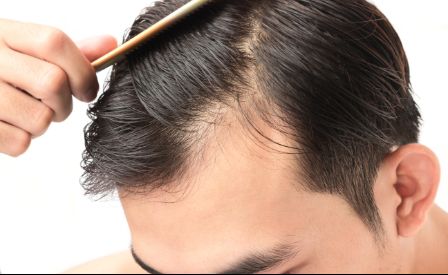Hair Transplantation

The advent of micrografts has transformed this surgery. It helps to reduce the impact of intervention and residual scarring. Are you looking for a way to restore your hair and regain confidence? An hair transplant provides an effective solution that can help you get back the natural look of your hair. Whether you are experiencing thinning or baldness, this procedure can treat both men and women.
What Is Hair Transplant
A hair transplant is a surgical hair restoration procedure involving transferring existing scalp hair from the donor area to the recipient site. The two types of hair transplant techniques commonly used for hair restoration today are FUT (follicular unit transplantation) and FUE (follicular unit extraction). FUT, also known as the strip method, entails removing a strip of tissue with healthy follicles from the donor area and transferring it to the bald or diminishing patches on the head which gives more grafts. On the other hand, FUE involves taking individual follicles from areas where the growth of hair is not affected and implanting them in areas with thinning hair. It is an increasingly popular technique due to its relatively short healing period. Another FUE advantage is that it also eliminates extensive scars related to FUT procedure. The principle of these treatments is always the same: taking hair from the crown region, where hair is never lost, and transposing it into the frontal and tonsure regions.
All these procedures can be combined on the same patient. Each case needs to be properly analyzed and several parameters need to be considered: the extent of hair loss, the softness of the scalp, hair quality and the patient’s expectations.
Who Can Have a Hair Transplant?
Hair transplant surgery has become a popular solution for people who suffer from hair loss. However, not everyone is a suitable candidate for the procedure. The decision to undergo hair transplant surgery is a complex one that requires careful consideration of various factors, including the cause and extent of hair loss, medical history, and overall health. Generally, hair transplant surgery is suitable for people with hereditary hair loss, male or female pattern baldness, and certain types of alopecia, including alopecia areata. To be a candidate, the individual must have healthy hair growth in the donor area (valued by the surgeon), typically the back or sides of the scalp (they are both areas not affected by alopecia). It is essential to note that age is not a barrier to hair transplant surgery, as both younger and olders may undergo the procedure. Overall, the final decision should be made after a thorough evaluation by a qualified surgeon who will assess the patient's suitability for the procedure and advise on the most appropriate treatment plan based on their individual needs and circumstances.

Type of Hair Transplantation & Methods Of Treatment.

Aesthetics surgery
Hair loss surgery has made decisive progress that now usually offers an appropriate therapeutic strategy and technique, and whether simply with micrografts or with other techniques, can solve the main aesthetic issues caused by hair loss in both men and women.
Recovering From Hair Transplant
Hair transplants can offer a way to return to a fuller head and restore confidence. The procedure's outcome depends on how well the process is managed, according to the following expectations: You're likely to return to work after 3 days. One must take caution not to touch the transplanted area for up to 2 weeks. Maintain a minimum exercise routine in the first month after to reduce scarring. It may take six to 18 months to see the full results of new hair growth with the shedding of hairs at around 2-5 days post-surgery.
Risks of Hair Transplant
A hair transplant is generally a safe procedure; however, there are some risks associated with the process. These include:
- Infection
- Bleeding
- Scarring
- Damage to the hair follicles
- Numbness in the area of surgery
- Swelling or redness around the grafts
Hair Transplant in Geneva
In conclusion, if you're looking for the best option for laser hair transplant in Geneva, the Aesthetics Clinic is undoubtedly the top choice. With their state-of-the-art technology and highly skilled team of professionals, the clinic provides the most advanced and effective treatments for hair restoration. What sets the Aesthetics Clinic apart from other hair transplant clinics in Geneva is their personalised approach to treatment. They take the time to understand each patient's unique needs and concerns and create a customised treatment plan that delivers the best possible results, both for FUE and FUT surgeries. Furthermore, the clinic's commitment to providing patients with a comfortable and stress-free experience makes them stand out. They ensure that each patient is treated with the utmost care and respect, from the initial consultation to the final follow-up appointment. Overall, the Aesthetics Clinic in Geneva offers the best option for laser hair transplant in Geneva.Aesthetics
Dressing
The principle of these treatments is always the same: taking hair from the crown region, where hair is never lost, and transposing it into the frontal and tonsure regions.
Time of work
For micrografts, a small scab forms over each graft that falls off after 8 to 10 days.
The results
About 3 to 6 months is needed in order to assess the results of micrografts, and in any case, at least two interventions are necessary in order to get sufficient hair density. For other techniques, the result is immediate.
Type of Anaesthesia and Hospitalisation
Most interventions can be done under a local anesthetic associated with a superficial sedation
The intervention can be done on an out-patient basis, i.e. leaving the hospital on the same day after a few hours of surveillance.

Contact our beauty experts
for more advice
